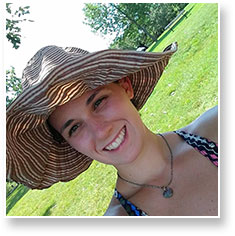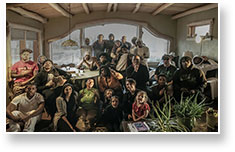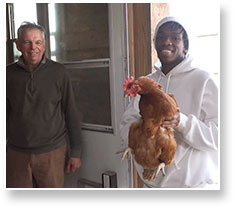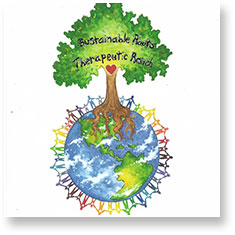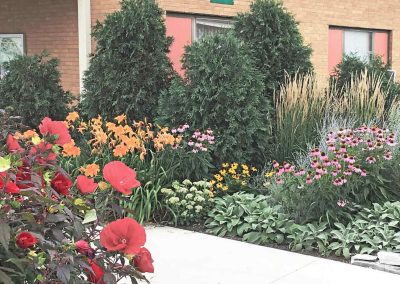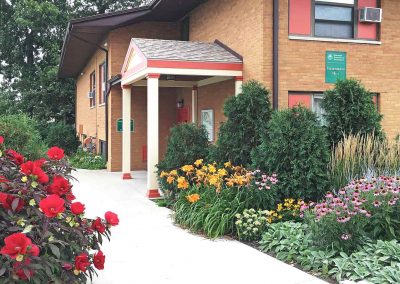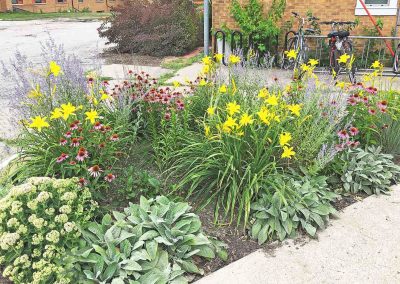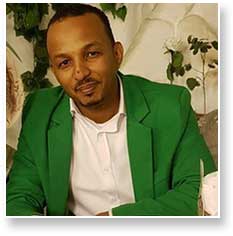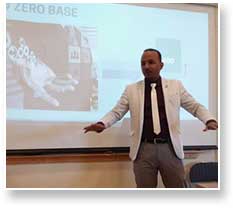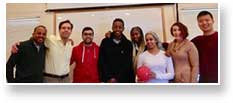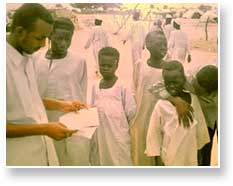
Barbara Hays–Innovation in Education
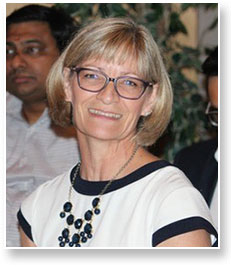
Barbara Hays, 2018 Valedictorian (photo by Craig Shaw)
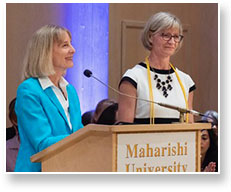
Receiving the Outstanding Student Award from Professor Paula Armstrong (photo by Ken West)
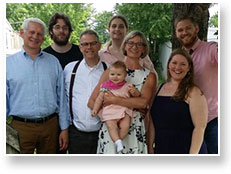
With her family (photo by Tania Kalamara)
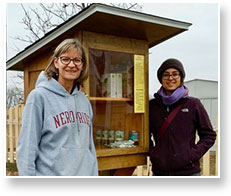
With Dora Pollack at the opening of the Little Free Pantry near the MUM Golden Dome Market, which Barbara built and maintains (photo by Edward Caplan)
“Teaching is not what you do, it’s who you are,” says Barbara Hays, who has always been a teacher. She was inquisitive as a child, and enjoyed sharing her discoveries with her peers. Her interest in science and dedication to education paid off: she graduated this year as MUM’s Valedictorian and received the Outstanding Student Award from the Department of Education.
Barbara moved to Fairfield in 1996, so that her three children could attend Maharishi School. She worked at Maharishi School in administrative positions and then moved on to teaching science and math. Although she studied engineering at Carnegie Mellon University, Barbara didn’t graduate. So after 14 years of teaching, she decided to obtain her education degree at MUM.
Going to school was hard, Barbara says, and she had to use all the techniques she had taught her students to help her retain the knowledge. At the same time, she was excited by the challenge, and accomplishing a difficult task made it all the more satisfying.
For her student teaching, Barbara spent a semester at Mount Pleasant Community High School, where she taught seven classes five days a week, which is typical for public school teachers. “The number one thing I learned at Maharishi School and MUM is that if you are well-rested, children are delightful,” she said. “I don’t know how public school teachers teach without being able to practice TM. It’s such an essential tool. Especially for teachers.”
Barbara noticed that many of her students didn’t do their homework simply because they had too many other obligations. To improve their test scores, she restructured her classes so that students could get enough practice even if they skipped homework. She recognizes that learning seven different subjects each day is challenging for students, and she feels her job is to find the most efficient ways to teach them.
Barbara is not new to innovation. At Maharishi School she and co-teacher Richard Incorvia spent five years creating a project-based curriculum, which turned out to be an effective and fun learning method for students. Barbara likes pushing her limits and trying out new things, which is one of the reasons why Cardinal High School in Eldon hired her to teach math starting this fall.


